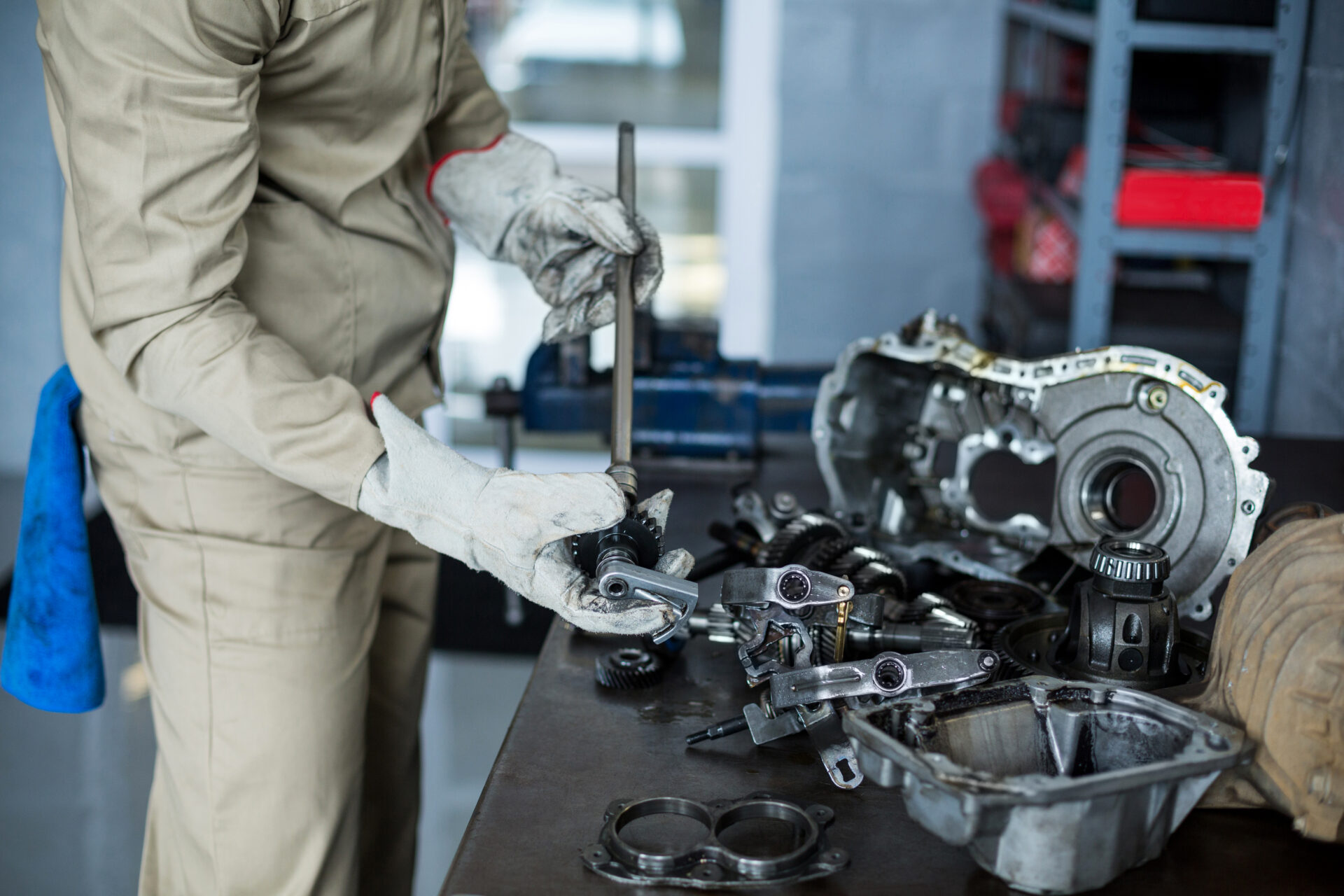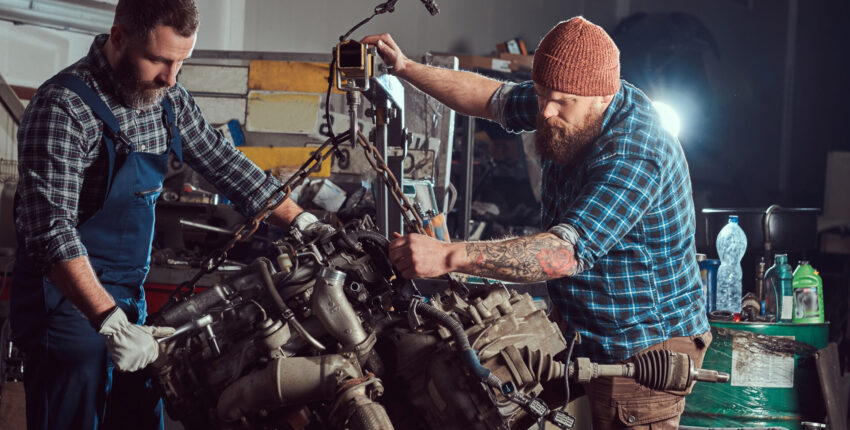Rebuilding an engine is a complex and rewarding process that can significantly extend the life of your vehicle. Whether you are a professional mechanic or an automotive enthusiast, understanding engine rebuilding can save money, improve performance, and provide a deeper knowledge of your car. This guide outlines the process of rebuilding an engine, covering every step from diagnosis to testing, so you know what to expect when revitalizing your vehicle’s powertrain.
Understanding the Basics of Engine Rebuilding
What Rebuilding an Engine Involves
Engine rebuilding requires disassembling, cleaning, inspecting, repairing, and reassembling engine components to restore performance and reliability. Each part is carefully examined and either repaired or replaced to meet factory specifications. The goal is to renew worn components, optimize efficiency, and ensure the engine operates at peak performance. This process demands precision, patience, and attention to detail, as even minor errors can affect the engine’s performance or longevity.
Why Consider an Engine Rebuild
Rebuilding an engine can be a more cost-effective alternative to purchasing a new or used engine. It allows for upgrades and customization, enabling you to enhance performance, fuel efficiency, or durability according to your needs. Additionally, a rebuilt engine can significantly increase your vehicle’s lifespan, making it a practical investment if you plan to keep your car for several years.
Financially, a new engine can cost between $3,000 and $7,000, depending on the make and model. A complete rebuild typically ranges from $2,500 to $4,500, offering substantial savings while providing the opportunity for tailored improvements. Rebuilding also allows for the use of high-quality components that may exceed original specifications, improving reliability and long-term performance.
The Step-by-Step Process of Engine Rebuilding
1. Diagnosis and Preparation
The first step in engine rebuilding is a thorough diagnosis to assess the condition of the engine and determine which components require attention.
Assessing Engine Condition:
Mechanics perform diagnostic tests to evaluate engine health. This can include compression tests, leak-down tests, and inspections for oil and coolant leaks. Results reveal issues such as worn piston rings, head gasket failure, or valve damage, allowing for a precise repair plan.
Sourcing Parts and Tools:
After diagnosis, the necessary parts and tools are gathered. This may include pistons, bearings, gaskets, seals, and specialized tools required for machining or assembly. Careful preparation ensures the rebuild process proceeds without delays and reduces the risk of errors caused by missing components.
2. Engine Disassembly
Disassembling the engine is a critical step that requires careful organization and attention to detail.
Removing the Engine:
The engine is removed from the vehicle, often using a hoist. This stage requires careful handling to prevent damage to the engine or surrounding components.
Disassembling Components:
Every part, including the crankshaft, pistons, valves, and camshaft, is removed and cataloged. Detailed labeling and organization are essential to ensure accurate reassembly and prevent lost parts.
3. Cleaning and Inspection
After disassembly, all engine components must be thoroughly cleaned and inspected for wear or damage.
Cleaning Components:
Specialized cleaning agents and equipment are used to remove oil, carbon deposits, and other contaminants from every part. Clean surfaces are essential for accurate inspections and proper assembly.
Inspection:
Mechanics inspect each component for cracks, excessive wear, or deformation. Decisions are made to reuse, repair, or replace parts. Preventive maintenance, such as regular oil changes and using high-quality lubricants, can reduce wear and limit the extent of future repairs.
4. Machining and Parts Replacement
Some engine components require machining to restore proper specifications, while others must be replaced to ensure reliability.
Machining Components:
Cylinder heads, crankshafts, and other precision components may need resurfacing or resizing. Machining ensures parts meet exact factory tolerances, providing optimal performance and longevity.
Replacing Worn Parts:
Critical components such as bearings, seals, pistons, and gaskets are replaced with new parts. Using high-quality replacements prevents future failures and maintains engine reliability. Machining costs can range from $400 to $1,000, depending on the complexity of the work required.
5. Engine Reassembly
Reassembly is the most precise phase of the rebuild and requires strict adherence to specifications.
Following Manufacturer Specifications:
Every component is reassembled according to manufacturer guidelines to ensure proper fit and operation. Torque specifications, alignment marks, and timing adjustments must be followed to prevent damage or reduced performance.
Preliminary Testing:
As components are assembled, systems such as oil delivery, timing, and valve operation are tested for functionality. Early testing identifies issues before final assembly, ensuring the rebuilt engine operates correctly.
6. Testing and Break-In
Once the engine is fully assembled, testing and break-in procedures are essential to ensure long-term performance.
Initial Testing:
The rebuilt engine is run on a test stand to confirm it starts smoothly, operates consistently, and does not exhibit leaks or abnormal noises. Adjustments are made to optimize performance and reliability.
Engine Break-In:
The engine undergoes a controlled break-in period, during which it is run under specific conditions to allow piston rings and other components to seat properly. Proper break-in reduces oil consumption, ensures efficient operation, and minimizes the risk of future problems.
Benefits of Engine Rebuilding
Cost-Effectiveness and Longevity
Rebuilding an engine can save money compared to buying a new engine or vehicle. It restores performance while extending the life of your vehicle, making it a practical investment for car owners committed to maintaining their cars over the long term.
Performance Improvements
A rebuilt engine offers opportunities to enhance performance, improve fuel efficiency, and increase reliability. Modern components and upgrades can be incorporated into the rebuild to improve engine output, reduce emissions, and optimize durability.
Customization Options
Engine rebuilding allows customization based on your vehicle’s intended use. From performance enhancements to durability improvements, a rebuilt engine can be tailored to meet specific goals, whether for daily driving, racing, or off-road applications.
Choosing Professional Engine Rebuilding Services
At John’s Automotive Restoration & Repair in Greenwood Lake, NY, our team specializes in engine rebuilding. We combine technical expertise with experience to deliver engines that operate reliably and efficiently. Our service includes personalized guidance and attention to detail at every stage of the process, ensuring your vehicle performs at its best.

If you are considering an engine rebuild or require engine repairs, contact us. Our team provides professional support throughout the process, helping you maintain or enhance your vehicle’s performance.

